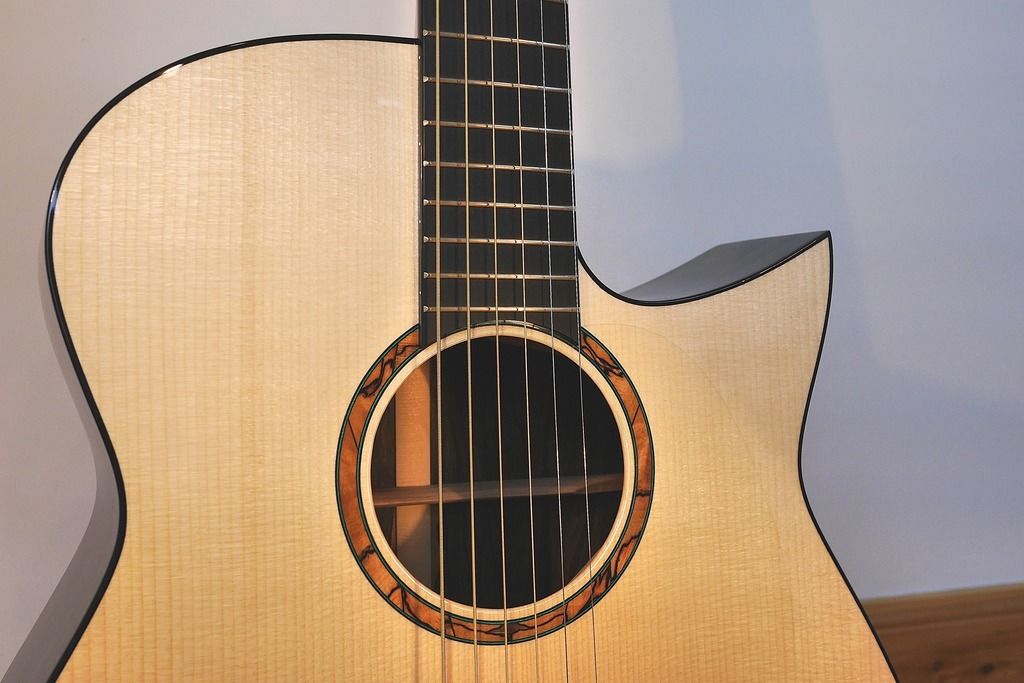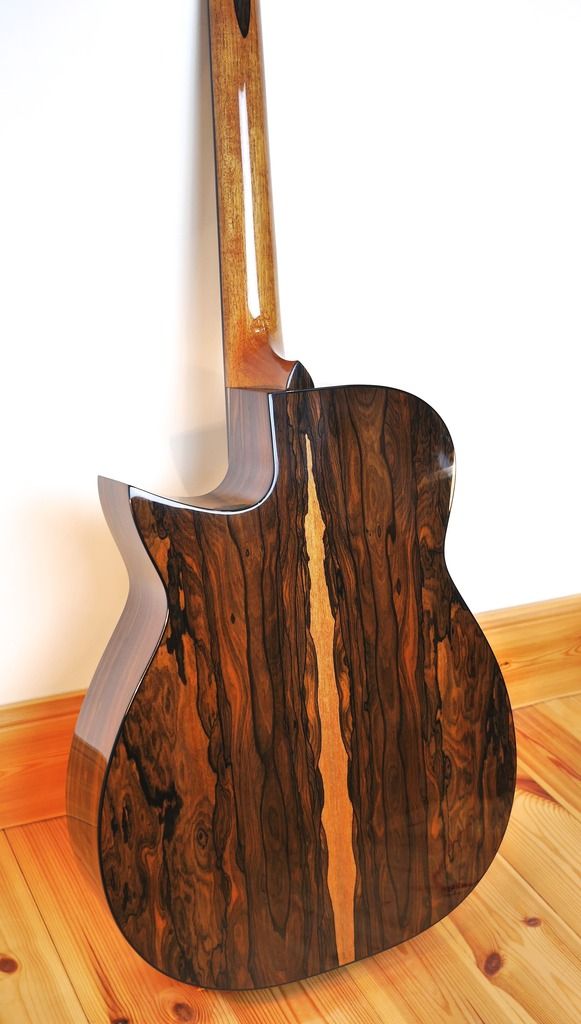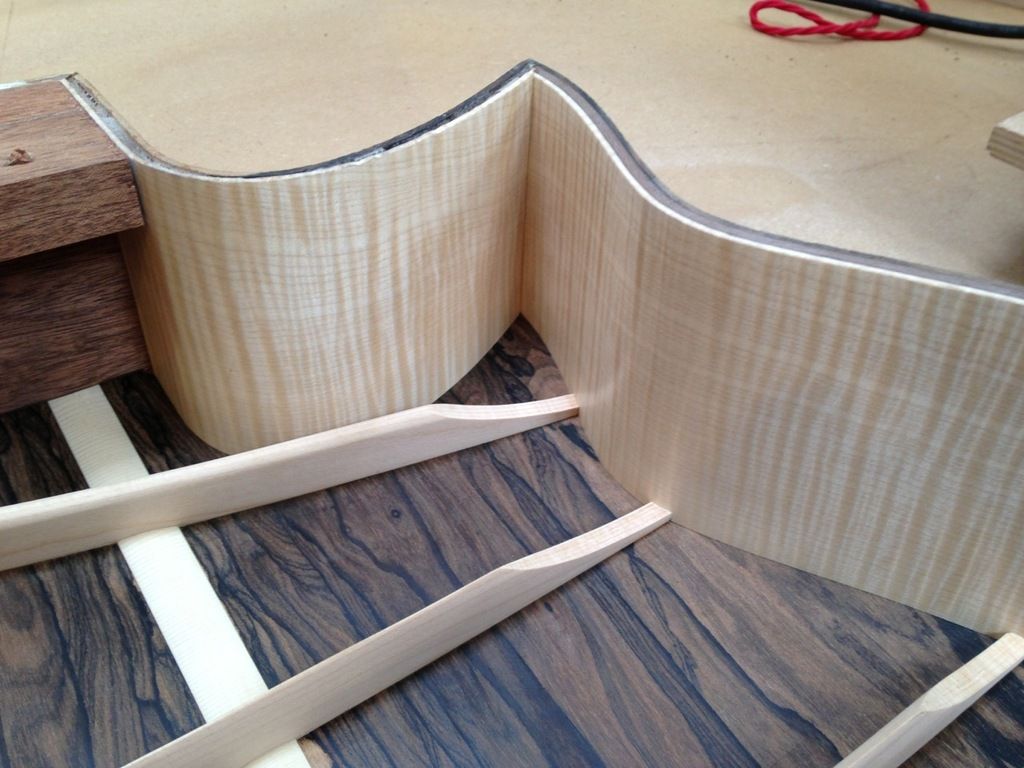francis
C.O.G. 
Posts: 2,482  My main instrument is: Whatever I'm building...
My main instrument is: Whatever I'm building...
|
Post by francis on May 8, 2016 9:59:40 GMT
Interesting threads on built-up sides using various methods - what is the rational behind the technique...
Francis
|
|
|
|
Post by yorkie on May 8, 2016 13:43:49 GMT
It does seem like a lot of effort doesn't it.
I've looked at it in the past and I can see that it might resist splitting better than solid sides.
My conclusion was that solid sides are more forgiving to the builder - no sand through to lower veneers etc. So I use solid sides.
Are you giving it a go, Francis?
|
|
francis
C.O.G. 
Posts: 2,482  My main instrument is: Whatever I'm building...
My main instrument is: Whatever I'm building...
|
Post by francis on May 8, 2016 13:49:40 GMT
It does seem like a lot of effort doesn't it. I've looked at it in the past and I can see that it might resist splitting better than solid sides. My conclusion was that solid sides are more forgiving to the builder - no sand through to lower veneers etc. So I use solid sides. Are you giving it a go, Francis? On the fence at the mo - hence the question. I've made an ES175 look a like with veneer laminations but I used 0.6mm veneers and 4 layers so they were in effect the same as a standard side. Used the same timbers for the layers just in case I sanded through! |
|
|
|
Post by nkforster on May 8, 2016 19:49:28 GMT
|
|
francis
C.O.G. 
Posts: 2,482  My main instrument is: Whatever I'm building...
My main instrument is: Whatever I'm building...
|
Post by francis on May 9, 2016 6:51:21 GMT
Thanks Nigel, Great blog, really must look further into this - thanks Francis |
|
alig
C.O.G. 
Posts: 1,059 
|
Post by alig on May 10, 2016 7:37:38 GMT
You could have a word with Rory Dowling at Taran Guitars.... He's made me a Tirga Beag with Coco b/s, sides laminated with Sycamore and a Ulladale (mod dread) with Ziri b/s, laminated with Sycamore and Nomex in between. Showed them both to Martin Simpson last week and he particularly loved the TB.     The side construction of the dread is particularly noteworthy - there's an obvious sense of the top working harder on the very stiff sides. Martin and I are arranging a swap later in the year when Dave's road trip guitar makes its way up here - Martin will be better able to describe the Tarans than I... They are, though, wonderful instruments. What I will say is that in addition to the above I have a 'traditionally' built Goodall which is a wonderful instrument too. The single sides 'work' on it and the double/triple sides 'work' also. The rationale behind stiffer sides seems logical to me and were I to get another guitar built for me it would involve stiffer sides... Maybe that's the answer there - it's subjective. |
|
|
|
Post by scripsit on May 10, 2016 8:40:43 GMT
Francis you might also look at the Trevor Gore/Gerard Gilet books on acoustic guitar design and construction.
Lots of theory, but one important factor in what they suggest seems to be getting the sides stiff enough to allow both top and back (for live back guitars) to reach their optimum vibration frequencies. Gore even loads the sides of his guitars with additional mass (threaded blocks to which washer weights can be attached) to fine tune these frequencies.
The aim is volume, note separation and lots of desirable overtones ('built in reverb').
Kym
|
|
francis
C.O.G. 
Posts: 2,482  My main instrument is: Whatever I'm building...
My main instrument is: Whatever I'm building...
|
Post by francis on May 10, 2016 10:42:57 GMT
This is great - thank you.
This was asked as I'm looking to build a triple O fan fretted guitar with stiffer sides but really knowing very little about them. Reading the Gore/Gilet book review was very interesting - anyone got a copy they want to sell?
|
|
colins
Luthier / Guitar Maker
Posts: 2,397 
|
Post by colins on May 10, 2016 11:43:37 GMT
Francis, you don't need to laminate the sides to make them stiff, the easiest way is to just use laminated linings. These form engineered structures that stiffen the sides without adding the extra weight. The only real function of the sides is to hold the back and top apart. The problem with laminated sides is they really need to be made using vacuum to ensure no gaps over the area of the sides. As you probably know I use laminated linings and have done so on more than 80 guitars now and once installed the mould can be completely dispensed with as the sides are now stiff enough to take the pressure from 30 or so go-bars without any movement.
Colin
|
|
|
|
Post by earwighoney on May 10, 2016 11:50:18 GMT
I don't have much to add to the laminated sides issue, but going slightly off topic I really like guitars with arched laminated backs like the old Guilds (and some Furchs as well)
|
|
|
|
Post by scripsit on May 10, 2016 12:16:32 GMT
|
|
francis
C.O.G. 
Posts: 2,482  My main instrument is: Whatever I'm building...
My main instrument is: Whatever I'm building...
|
Post by francis on May 10, 2016 15:12:12 GMT
Thanks Kym, The curved bracing very reminiscent of Gary Southwell model A soundboard bracing although I don't think Gary uses carbon on the braces (they're also far more delicate as it's on a classical model) but uses CF rods within the body. |
|
|
|
Post by earthbalm on May 10, 2016 17:28:55 GMT
Very informative Nigel and inspired me to have another look at your site. Fantastic content! |
|
francis
C.O.G. 
Posts: 2,482  My main instrument is: Whatever I'm building...
My main instrument is: Whatever I'm building...
|
Post by francis on May 14, 2016 6:55:14 GMT
Francis, you don't need to laminate the sides to make them stiff, the easiest way is to just use laminated linings. These form engineered structures that stiffen the sides without adding the extra weight. The only real function of the sides is to hold the back and top apart. The problem with laminated sides is they really need to be made using vacuum to ensure no gaps over the area of the sides. As you probably know I use laminated linings and have done so on more than 80 guitars now and once installed the mould can be completely dispensed with as the sides are now stiff enough to take the pressure from 30 or so go-bars without any movement. Colin Thanks Colin, I've made linings using mahogany laminations in the past but these have been kept very much to the sizes of standard kerfed linings. Yes they do keep the sides in-shape when removed from the mould. They also make the guitars interior look much neater. I guess what I'm 'seeing' from the different articles/blogs/websites dealing with laminated sides is that they don't absorb (read - minimal) any of the energy from either the front or back plates and being a solid structure in themselves means that bracing the top and back can be a more minimal affair because sides won't distort under string loading. I take your point about ensuring no gaps in the laminations when building the sides. I've used a vacuum to laminate veneer layers on the front and back plates of a couple of guitars where I wanted an archtop without the carving. These being relatively flat weren't too much trouble but I can foresee the sides being a little more problematic. My thoughts at present are on the lines that I need to build a guitar with solid sides to see if it does effect the sound in the way others are finding at the expense of a heavier instrument... |
|
R the F
Luthier / Guitar Maker
Posts: 1,135  My main instrument is: bandsaw
My main instrument is: bandsaw
|
Post by R the F on May 14, 2016 9:06:14 GMT
As you know, francis, the build I'm in the middle of has thick laminated sides. I previously used laminated linings copied from colins's builds and used similar two-part moulds to make them. When it came to making the laminated sides, I just scaled up the moulds by stacking the two halves of the mould and lining one side with cork, thus:   |
|